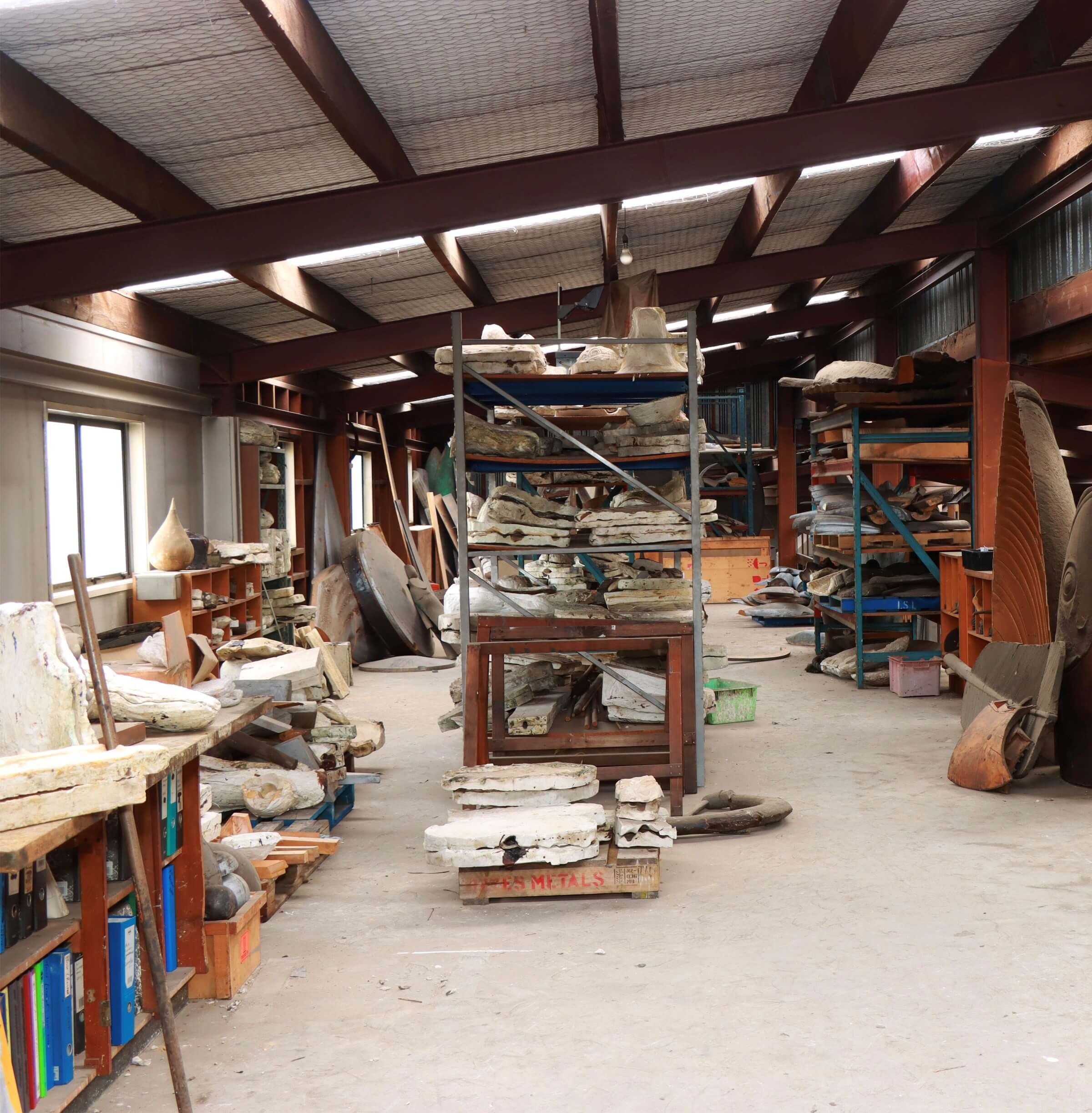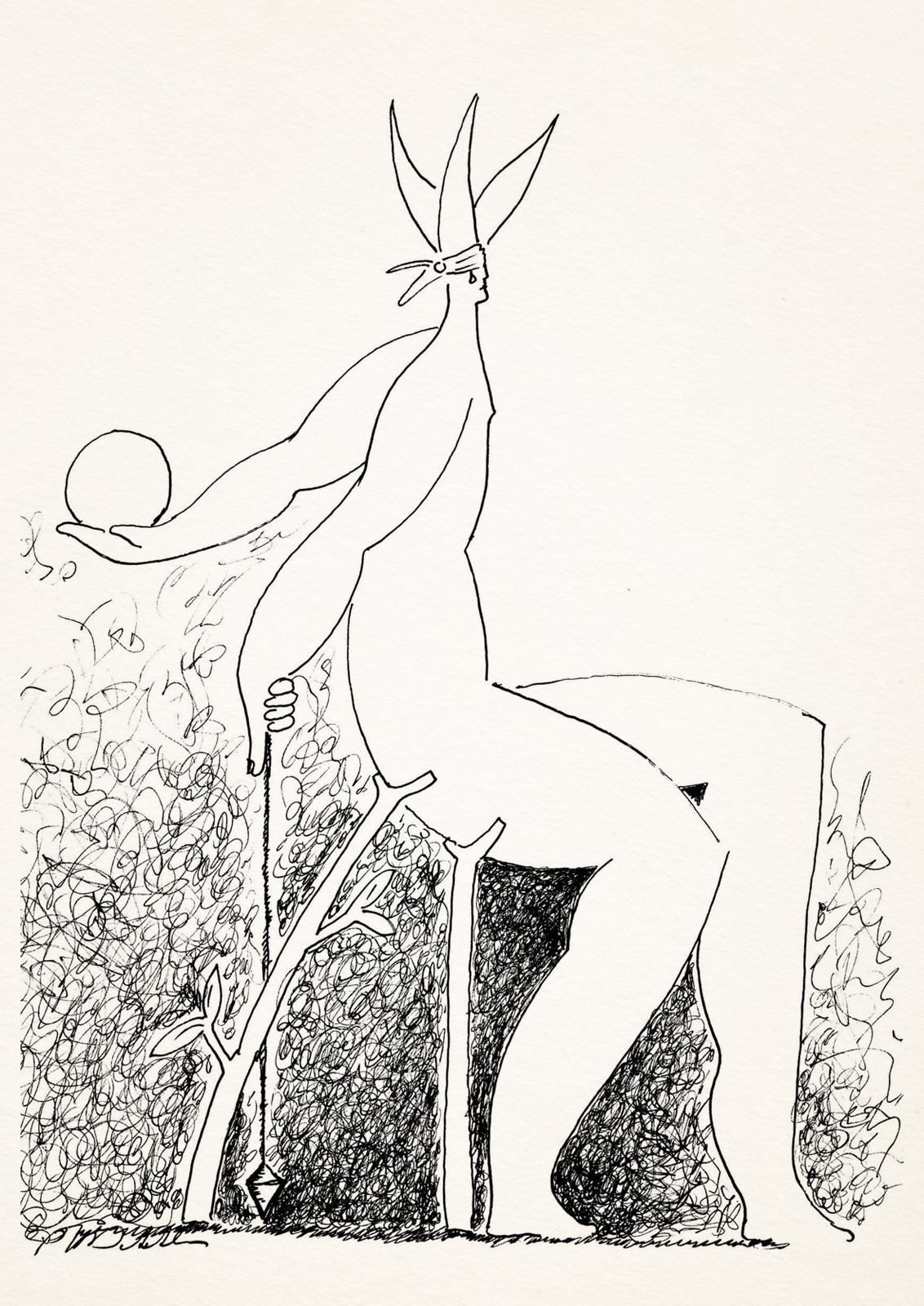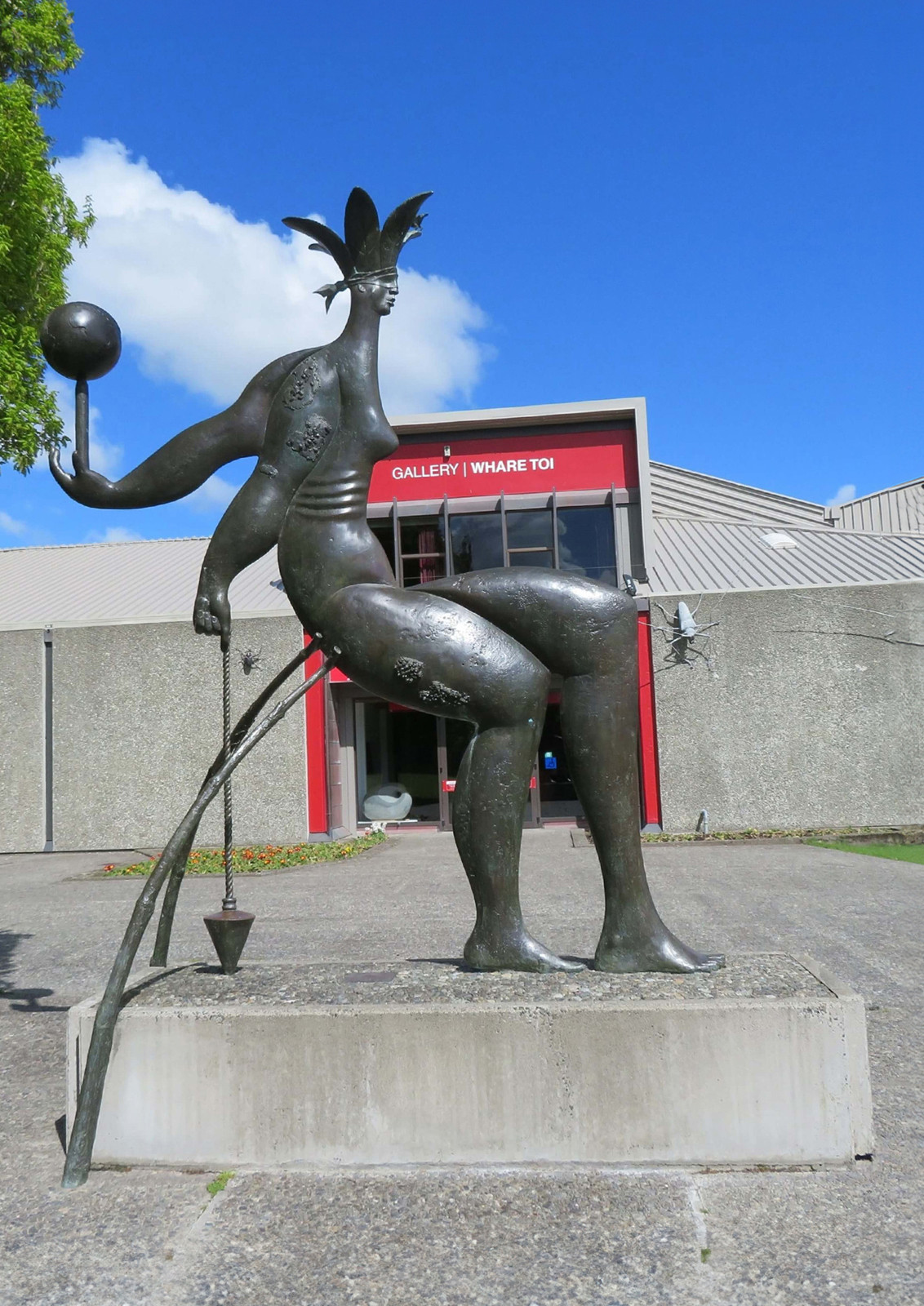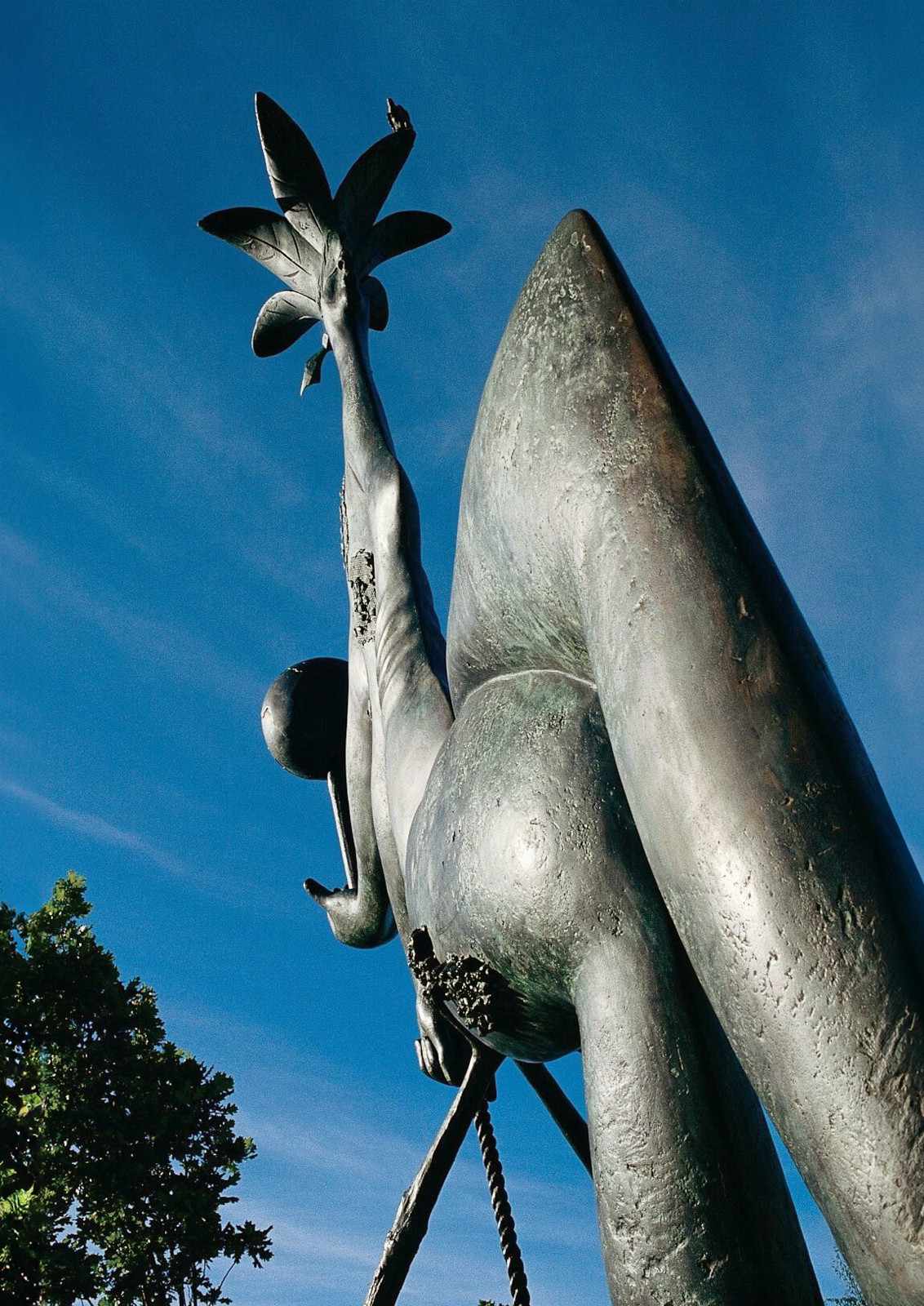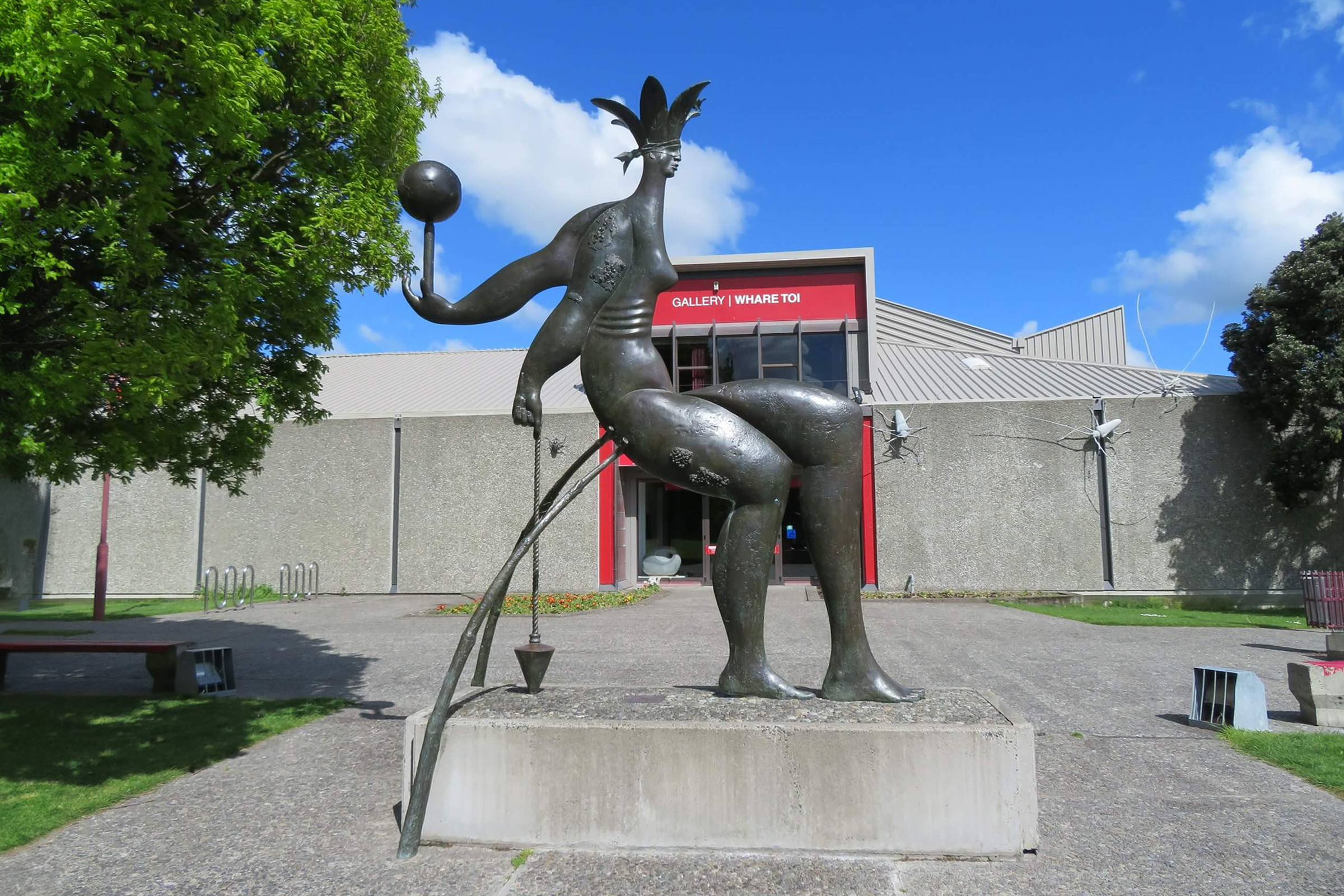1992 Pacific Monarch
1992 Pacific MonarchBronze
3950 x 3100 x 1500 mm
1992
Single edition
Intent to Construct, 1995
In 1995, during the creation and casting of Pacific Monarch, Director Steve La Hood documented the production of the large scale bronze sculpture.
Notes
The funds to build a sculpture on this site came from a bequest from the estate of Gertrude Raikes, a local citizen known for her flamboyance, who died in 1985. The gallery, headed at that time by Director Julie Catchpole, worked with the Art Gallery Society to set up a competition to design a sculpture for the site, and in 1988 four sculptors were invited to submit proposals. Dibble’s entry, titled Papaioea (which translates as “there are beauties here”), referred to the area where surveyors first plotted the settlement of Palmerston North. It featured two walking figures, delicately making their way across the ground. The model Dibble submitted is retained in the gallery collection, but Dibble’s proposal was not accepted. It was not until 1991, when negotiations with the selected artist foundered, that the commission was given to Dibble.
Before accepting the commission Dibble put forward a new concept and model. After his new proposal was approved, work began on what was, at that time, the largest bronze work Dibble had attempted.
The sculpture is a semi-abstracted figure that looks to be balanced on two spindly props (this is a visual illusion, as the figure is in fact supported by an internal steel armature winding through the leg and body).
The figure’s headdress of leaves is intentionally ambiguous as to whether it is a ceremonial Pacific crown or more reminiscent of the Greenman of Celtic Europe. The figure is blindfolded, an indication of the state of the settlers who were immigrants to an unknown land, blind to their futures. On the underside of the legs are barnacles, while honeycomb and bees are present further up the torso; bees moving into abandoned structures, here as analogy for the stories and myths from an old land left behind, and barnacles as if on the underside of a ship suggesting the long voyage settlers made.
In one hand the figure holds a plumb bob, demonstrating an intent to settle. The other hand balances a globe, acknowledging that many settlers moved halfway round the world to their new home. Notably the United States of America has been omitted from the globe (a quiet protest by Dibble on the emphasis given to international art by curators at the time). A clear view of New Zealand is evident from the ground, where people look up at the work from below.
A video of the making of Pacific Monarch, titled “Intent to Construct”, aired on national television.
